By Holly Sarkissian
The Problem: Not enough has been done to protect the biodiversity of our land and sea
Plant and animal species are going extinct at an alarming rate, putting the earth is on track to a mass extinction unless immediate action is taken. Amphibians are the world’s most endangered animals with half of the species at risk of extinction and many other creatures are facing extinction, including:
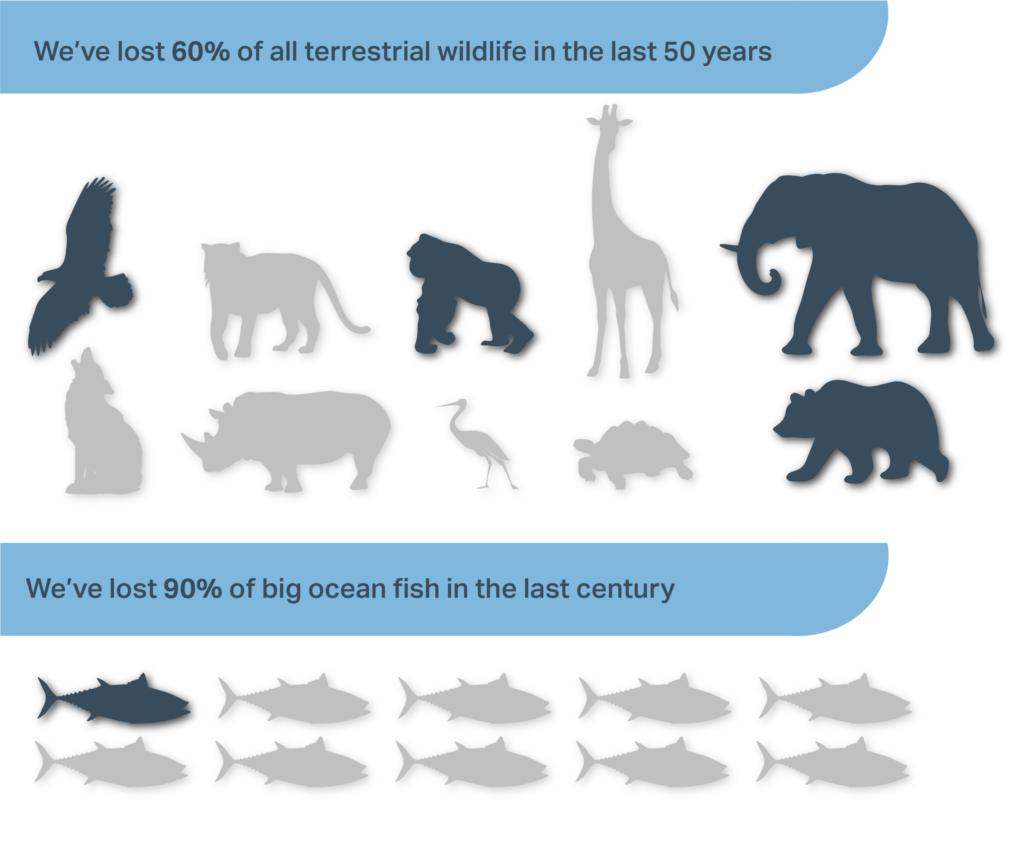
- One-third of corals, freshwater mollusks, sharks, and rays
- One-fourth of mammals
- One-fifth of reptiles
- One-sixth of birds
We have already lost 90% of big ocean fish in the last century and 60% of terrestrial wildlife in the last 50 years due to deforestation and land degradation. Although the Ocean covers 70% of the Earth, only 2% is strongly protected from destructive or extractive activities. At the same time, only 15% of land is protected.
Why is protecting the land and ocean important?
The degradation of land and ocean endangers our health, the air we breathe, the food we eat, and countless livelihoods.
Safeguarding human health: 75% of emerging infectious disease comes from animals. Displacing animals from their habitats increases the likelihood they will be pushed into areas inhabited by humans and risk transmitting zoonotic diseases. Scientists believe that the origins of the recent Ebola and COVID-19 epidemics are linked to human interactions with animals which were displaced from their original habitat.
The importance of the ocean: The ocean is home to 80% of all life on the planet. It is estimate that the ocean absorbs 30% of the excess carbon dioxide emissions and over 90% of the heat from global warming. It is the largest provider of protein in the world, sustaining 3 billion people who eat seafood as their primary source of protein. The ocean also contributes to ~$1.5 trillion USD in global economic activity and supports more than $39 billion USD annually from maritime and tourism activities alone.
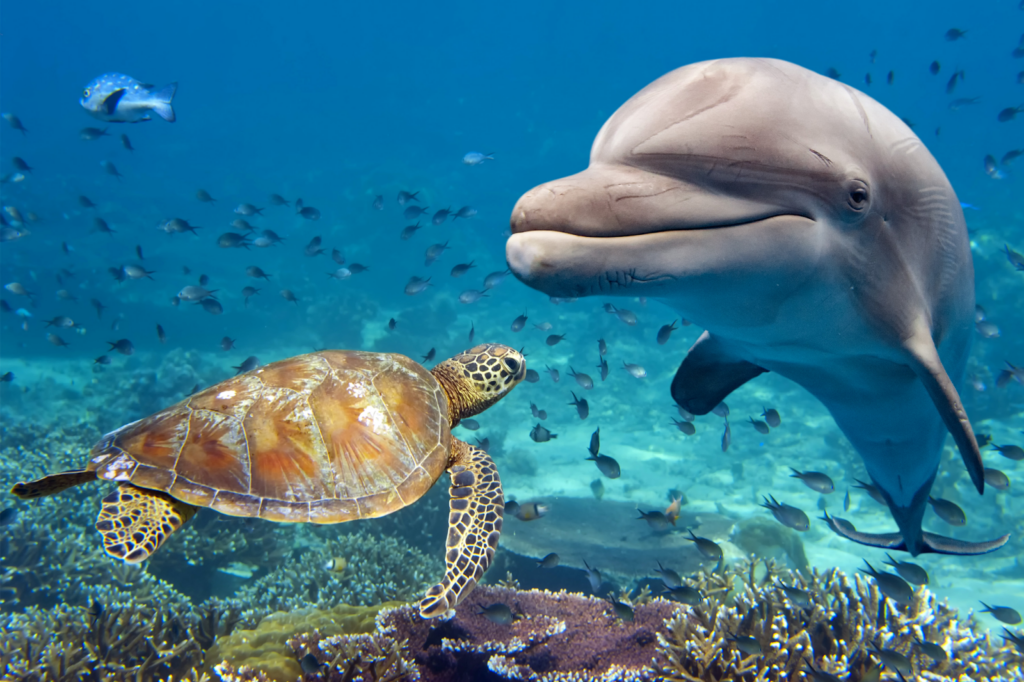
Source: World Animal Foundation
What is the solution?
Scientists warn that we must protect at least 30% of our oceans, lands, rivers, lakes, and wetlands by 2030 to prevent mass extinctions and bolster resilience to climate change. By 2050, scientists say we need half of the planet in its natural state to prevent the extinction of one million species, stay below 1.5°C global warming, and safeguard all people that rely on nature to survive and thrive.
The initiative to protect 30% of our land and oceans by 2030, known as 30×30, will help give us a chance to maintain global biodiversity. We have seen that when areas are protected wildlife comes back:
- Wolves in the U.S.: After being extinct for 70 years, wolves were successfully reintroduced to Greater Yellowstone Ecosystem (GYE) in the 1990s. Since then, research has found that wolf recovery leads to greater biodiversity in the region as wolves prey on elk and the elk caucuses provide food to other animals.
- Large Mammals in Rwanda: In the aftermath of war and genocide, Rwanda’s wildlife in Akagera National Park began to disappear; the lions were gone by 2002 and the last black rhino was seen in 2007. But in 2009 the big 5 (leopards, lions, Cape buffalo, elephants, and rhinoceros) were reintroduced to the park and now their populations are rebounding.
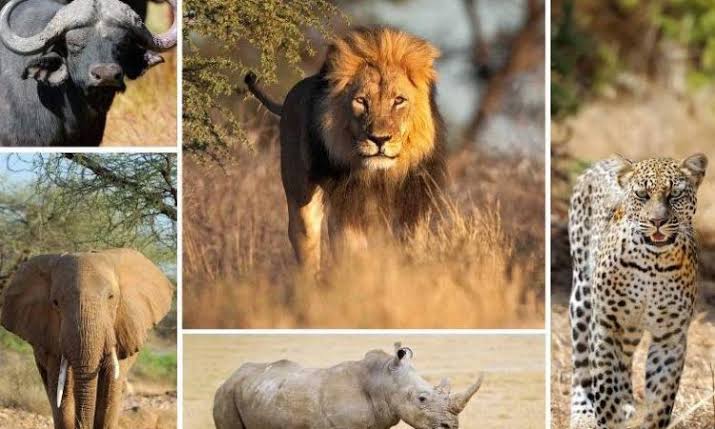
- Rhinos in India and Nepal: By the early 19th century there were fewer than 200 greater one-horned rhinos. However, with protection from Indian and Nepalese wildlife authorities in national parks their numbers have grown to around 3,600 today.
Similar successes have been observed in Marine Protected Areas (MPAs):
- Fish in Cabo Pulmo National Marine Park, California, U.S.: Studies found that the total amount of fish biomass in this MPA increased by 460% from 1999 to 2009.
- Species Diversity and Fish in Apo Island Marine Sanctuary, Philippines: The biomass of large predatory fish have increased 8-fold and the biomass and diversity of species has increased in the reserve overall.
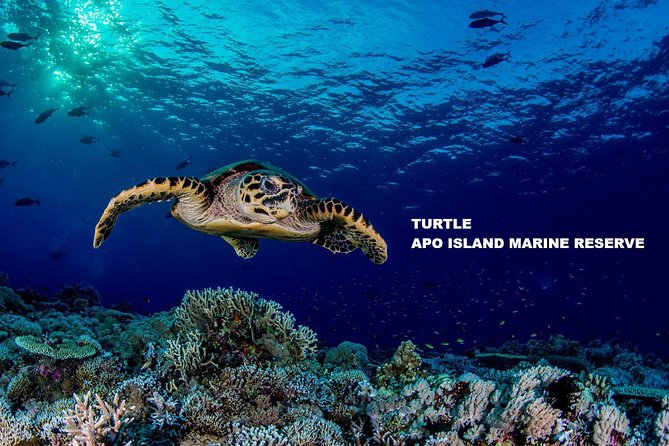
What can governments do?
Make the 30×30 commitment: Governments must commit to preserving at least 30% of their country’s oceans and land by 2030 with a focus on areas more important for biodiversity and on indigenous-controlled lands. 37% of Earth’s remaining natural lands are managed by indigenous peoples who, in some cases, must risk their lives to stand up against poachers and others who encroach on their land for illegal resource extraction or degradation activities. Furthermore, scientific studies indicate that Indigenous peoples and local communities are usually more effective at implementing conservation than government-funded agencies.
Bring 30×30 to the international stage: As part of the 2010 Convention on Biological Diversity (CBD) negotiations world leaders committed to protecting 17% of land and 10% of the ocean by 2020. A 2020 report concluded that from 2010-2019, the percentage of the Earth’s surface covered by protected areas increased from 14.1% to 15.3% on land, and from 2.9% to 7.5% in the ocean, falling short of previous CBD commitments. Now world leaders must not only strive to meet their 2020 targets as soon as possible but they also must increase their ambition and commit to global biodiversity targets of 30 x 30 or greater at the fifteenth meeting of the Conference of the Parties (COP 15) to the CBD taking place in November 2021.
Strategic Implementation of 30×30: It is not enough for our leaders to make this commitment on paper, the must then take action to implement 30×30 strategically:
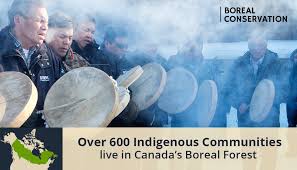
- Consider representation – Ideally, protection efforts will encompass a broad representation of species and ecosystems i.e., a little bit of everything. Leaders must preserve this variety when implementing their 30×30 commitments and not just conserve barren rock or ice.
- Prioritize intact ecosystems – Intact wilderness provides huge benefits for carbon sequestration, resilience, and species persistence.
- Invest in indigenous initiatives – Many of these important wildness areas lie on indigenous lands. These communities need support and protection.
- Fund Protection – Once a commitment has been made it is not enough to leave these areas untouched, these areas must also be monitored, studied, and managed for the best results. Such action requires resources and world leaders must ensure there is a national budget line to fund protection.
- Protect crucial ecosystems at risk of industrial development – We must guard key habitats against industrial anthropogenic impacts from forestry, mining, oil and gas, hydropower, and infrastructure in important ecosystems like the Arctic National Wildlife Refuge and the Boreal Forest.
- Pair with efforts to reduce environmental degradation and pollution beyond the 30×30 areas – Our leaders must also strengthen the environmental protection of the remaining 70% of land and oceans.
Case of the U.S.
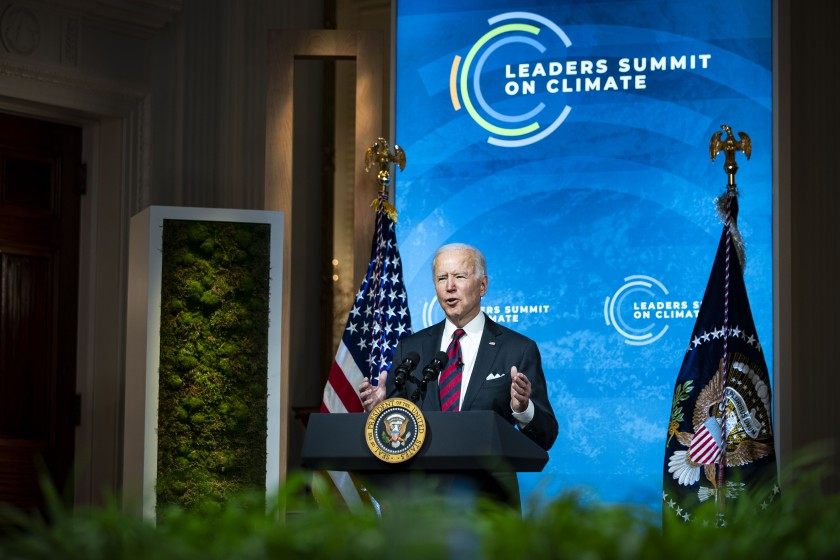
The U.S. has signed but not yet ratified CBD so it cannot directly participate in COP15. Nevertheless, the Biden-Harris Administration has committed to protecting 30 % of U.S. lands and waters by the year 2030. President Biden also stressed the importance of world leaders joining 30 x 30 during last month’s climate summit.
Today, only about 12% of America’s land area is under some type of environmental protection, while ~26% of the country’s ocean territories are protected. While the nation close to achieving the 30 x 30 goal offshore, getting to 30% on land will require environmental protections for a combined land area equal to twice the size of Texas.
To meet this challenge, the Biden-Harris Administration released a report on its “America the Beautiful” initiative for a 10-year, locally led and voluntary nationwide effort to restore and conserve America’s lands, waters, and wildlife. The report does not specify which lands will be conserved. It does, however, lay out the priorities for the beginning phase of the initiative which include supporting tribally led conservation and restoration, expanding collaborative conservation of fish and wildlife habitats and corridors, and incentivizing the voluntary conservation efforts of fishers, ranchers, farmers, and forest owners.
To combat climate change, the Biden-Harris Administration must incorporate maximizing carbon sequestration into its 30 x 30 strategy. According to a scientific study in 2018, the U.S. could potentially sequester the equivalent of 1.2 billion metric tons of carbon dioxide annually by 2025, an amount that is equal to 21% of current net annual emissions of the United States. These scientists suggest strategies to enhance carbon capture including reforestation, better management of forests on private lands, protecting forests from conversion to other uses, protecting grasslands from conversion to cropland, and restoring tidal wetlands.
Global Country Commitments
In January 2021, 50 countries committed to protecting 30% of the world’s land and ocean by 2030 known as the high ambition coalition. By March 2021, 83 countries joined this commitment. The first 50 countries to sign on collectively control:
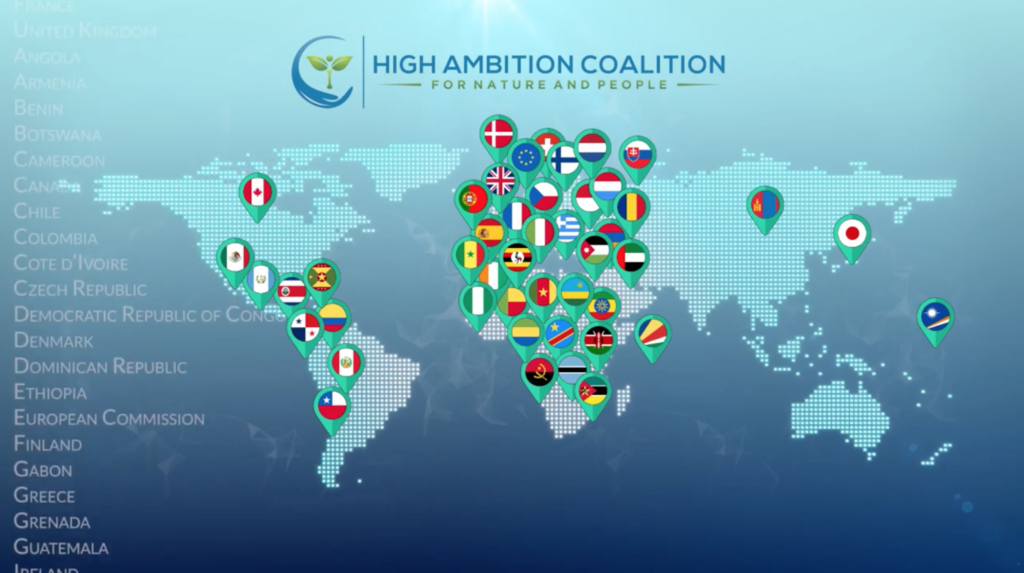
- 30% of global terrestrial biodiversity (using vertebrates as a proxy)
- 25% of the world’s terrestrial carbon stores (biomass and soil)
- 28% of ocean biodiversity priority areas
- one-third of the ocean carbon stores
Now, other countries must join the 30×30 campaign and strategically implement their commitments.
What can Nongovernmental Organizations (NGOs) do?
NGOs have been critical in shaping and directing the international community’s response to global environmental challenges. They act as agitators for environmental action, architects of governance solutions, and entrepreneurs for new sorts of initiatives. They can also lobby governments and “name and shame” governments who are not living up to their commitments.
NGOs must push for global adoption of the 30×30 targets at COP15. At a country-level, NGOs can advocate for the adoption of the 30×30 target and push for its strategic and effective implementation, protecting the most important and intact ecosystems. They can support the science-based monitoring and management of protected areas. They can also advocate for the aid and protection of indigenous communities, so they are not displaced or subjected to violence by poachers and others engaging in illegal resource extraction.
NGOs are already building and strengthening transnational advocacy networks for 30 x 30. For example, the Campaign for Nature is a partnership of the Wyss Campaign for Nature, National Geographic Society, and a growing international coalition of 100+ conservation NGOs calling on policymakers to commit to protecting at least 30% of the planet by 2030 by agreeing on a science-driven, ambitious new deal for nature at COP-15. The coalition is lobbying world leaders to mobilize funding to manage protected areas and to integrate indigenous leadership into their biodiversity conservation approaches. They will be working behind the scenes at COP-15 to push world leaders to make ambitious 30 x 30 commitments.

What can businesses do?
Over half of the world’s GDP, $44 trillion of economic value, is at moderate or severe risk due to nature loss. Businesses must examine their potential to both help and harm the environment. On the negative side, businesses consume large quantities of natural resources and generate significant negative externalities such as waste and pollution. They must work to reduce their environmental impacts. On the positive side, businesses can wield private authority by creating standards or practices that other actors adopt.
A way to promote compliance from businesses is to engage them in a green club volunteer program like Business for Nature which promotes standards of conduct which produce public environmental benefits. In return, club members get exclusive benefits such as affiliation with the club’s positive brand name. Successful clubs induce members to take progressive environmental action beyond what they would have done unilaterally. According to the Nature for Business coalition, 530 businesses have committed to taking action to reverse nature loss and 1200 businesses are already taking action to reduce their negative impact on nature, invest in protecting and restoring nature, and scale up products and technologies to have a lower environmental impact.
For example, Kering, a French-based multinational corporation specialized in luxury goods, is working in partnership with the Wildlife Conservation Society and other partners to increase the sustainability of the cashmere industry in Mongolia. Increased world demand for cashmere has led to a surge in goat numbers in Mongolia and the increase in goat grazing has led to the degradation Mongolian grasslands. For this initiative, Kering is working with its local suppliers to leverage technology to improve the efficient of goat-combing and to monitor the pasture quality by satellite to better manage grazing. More businesses must join this effort to re-orient their strategies and supply chains to prevent additional nature loss.
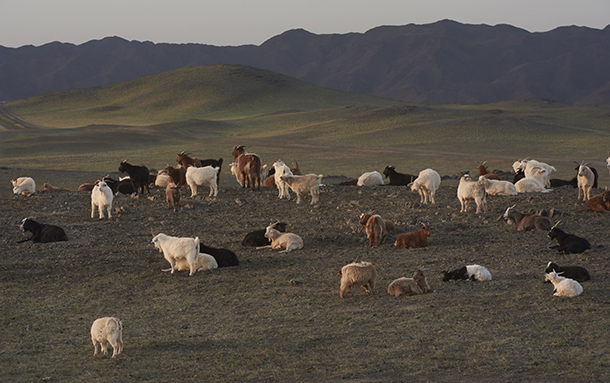
Source: Business for Nature
What can you do?

- Call on your world leaders to commit to protecting 30% of the world’s land and oceans by 2030 and to incorporate that commitment into the agreed targets of Convention on Biodiversity at COP15.
- Stay up to date on current scientific and political developments and ensure that your government is implementing its commitments.
- Use your time and money to support initiatives by NGOs and businesses working towards the 30×30 commitments.
Pushing for 30×30 is key to addressing the climate and biodiversity crisis we face. We must join efforts to make sure our world leaders set ambitious land and ocean protection targets and work successfully to achieve them.
